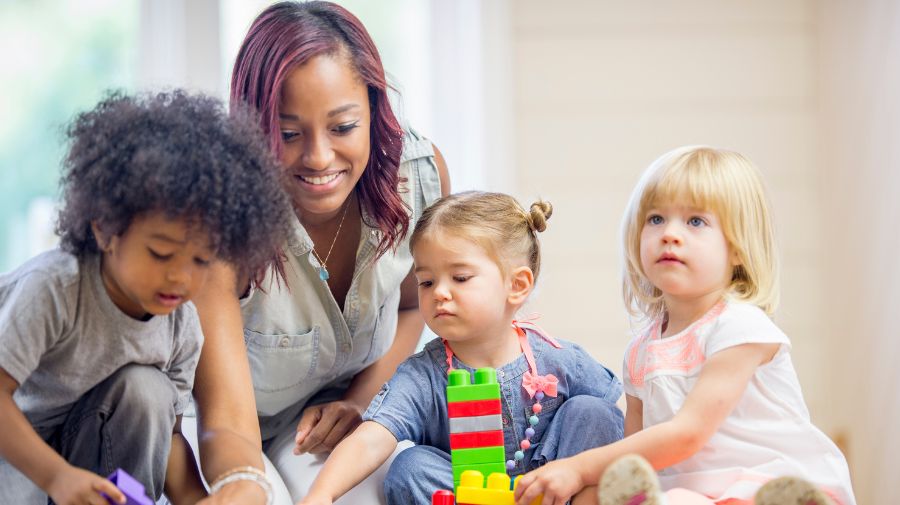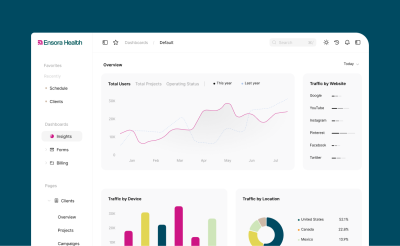5 non-directive play therapy techniques

What is non-directive play therapy?
Non-directive play therapy is a counseling method that empowers children to communicate their thoughts and feelings through the use of toys and play. It’s based on the idea that play is the way young children between ages three and twelve process and express what they may not be able to put into words. This therapy technique has proven effective with children who have a variety of mental health challenges.
In non-directive play therapy sessions, it may look like the child is simply playing and nothing more. However, this method can be a powerful way to help children with a therapist’s care and support. The child directs the process and the therapist enters the emotional world of the child to gain insight into the child’s play language. Here is what you need to know about non-directive play therapy and how it’s used to help children.
What non-directive play therapy helps with
Non-directive play therapy can be used for a broad range of mental, physical, or emotional concerns. It has been found to be effective with:
- Trauma
- Grief and loss
- Anxiety
- Social and/or family issues
- Academic issues
- Adjustment disorder
- Selective mutism
- Depression
- Reading difficulties
- Aggression/acting out behaviors
- Attachment difficulties
- Autism
This list is far from exhaustive, however, and you may find that this type of therapy is useful for children with other issues as well.
Children often communicate emotional distress through their behavior. Non-directive play therapy helps to give children a vocabulary of feelings and helps them to feel understood and validated. Through the connection with the therapist and the feeling of safety and validation that they receive, children begin to gain confidence and appropriate means to express feelings.
Non-directive play therapy session structure
Since the child leads non-directive play, sessions aren’t required to follow a particular structure. However, they do tend to follow these stages:
Initial evaluation — The therapist will usually begin by gathering information about the child and the problem(s) leading to therapy. This evaluation often includes discussions with the parent or family and may include school reports as well.
Rapport-building — When the therapist meets the child, the focus is on building trust and helping the child view the therapist as a supporting figure. Early sessions aim to show the child that sessions are a safe space.
Free exploration — The child is free to play in any way they wish to during all sessions. Many times, the therapist will play along with the child, following their lead.
Observing — Over several sessions with the child, the therapist will start to notice patterns in the child’s play. This can include play settings, like the child always wanting to play house or school, or how the child interacts (or doesn’t) with toys.
Discussion — The therapist draws from the observations to gently ask the child questions to encourage discussion about what happens during play. This helps the child to gain insight into their choices and to process emotions.
As with other therapies, you may want to bring in the parents at some point and relate your observations and discussions with what’s happening at home. It’s also good to discuss strategies to help support the child’s progress. Other family members may be invited to join some sessions as well.
Non-directive play therapy techniques
While non-directive play sessions are designed to be free-form and follow the child’s lead, there are a few techniques you can use with children for non-directive play therapy. Some common activities include:
Make-believe — Children may engage in reenacting scenes from their life or imaginary play with or without the therapist.
Playing with dolls and stuffed animals — Playing with dolls or other toys may help children reflect their thoughts and feelings through the stories that they enact.
Playing games — More structured activities like games can provide valuable insights into the child’s abilities to interact with others and can provide opportunities to practice following rules and social norms.
Painting, drawing, or sculpting — The process of creating art has the ability to help children process difficult emotions.
Using sensory toys — Children can learn techniques for relaxation and a sense of mastery over their surroundings when they play with substances like sand or water.
Even though the child leads the sessions, the therapist’s role during the sessions is very important. You’ll gently ask questions during the session to better understand the child’s perspectives and feelings. You can also model behavior to demonstrate positive examples and set boundaries. When a child doesn’t have the language skills to express their feelings, you may also help by observing and gently discussing the play activities with the child.
Non-directive play therapy is a widely researched, effective, and developmentally appropriate method for counseling young children. By providing a safe and non-judgmental space for the child to express themselves in their own language, non-directive play is a valuable tool for therapists.






